Review by Arman Zarmehr
In this review, finally after years, we are going to take a close look at Hellblade 2 and examine this cinematic interactive experience.
When I first experienced the first Hellblade, I was mesmerized by its visual characteristics and voice acting. But, during the experience, some approaches adopted towards the narrative and overall gameplay were not as pleasant for me. It showed that this game is not yet fully confident whether it wants to be a full-fledged cinematic work or wants to adhere to traditional “video game” rules. As a result, there was a lot of instability, especially in its gameplay. Now, after experiencing Hellblade 2, I can confidently say that Ninja Theory, just like Senua, has returned with confidence and a very clear goal.
This studio has accepted the cinematic nature of its work and in this regard, has used all aspects of this interactive experience in service of its cinematic approach. But the question that comes up is whether it has been successful?! Stay tuned to find the answer to this question.
The epic return of Senua and her disturbed mind
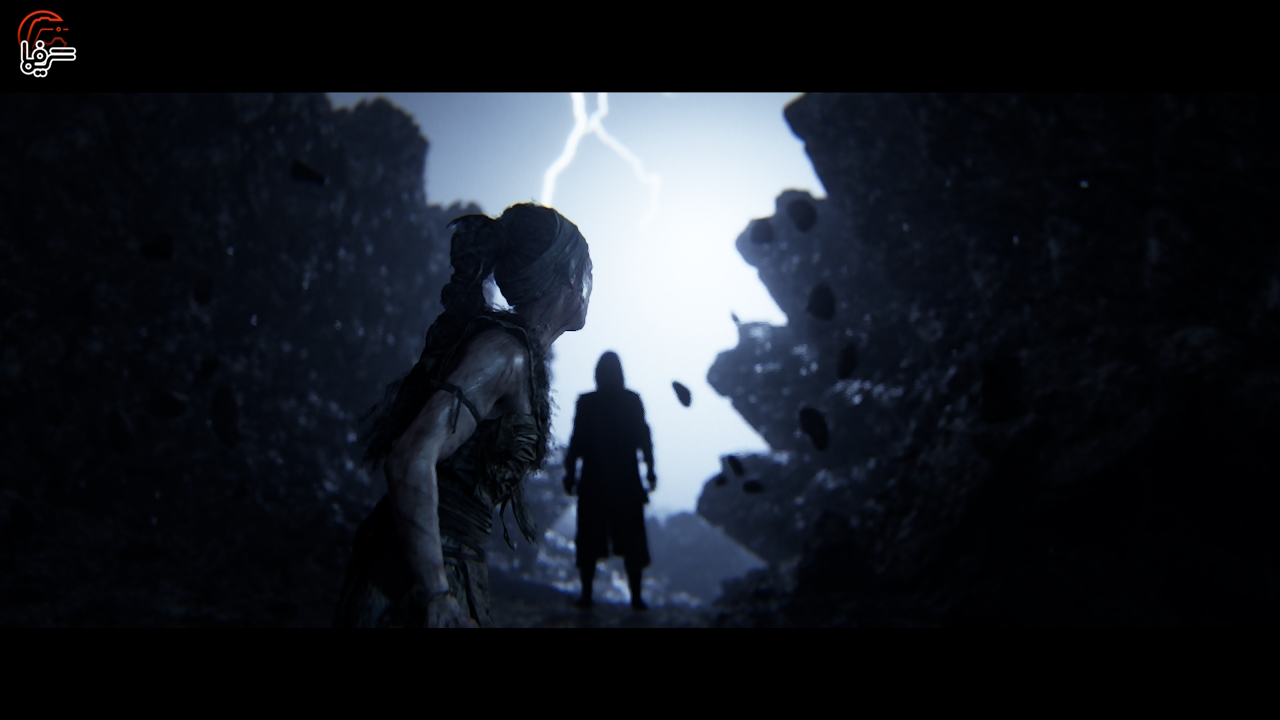
The narrative of Hellblade 2 appears more flexible and shakier than the original work at first glance, and it can appear more engaging.
The story of Hellblade 2 begins a little after the end of the first game, when Senua, in order to save her people who have been transferred to Iceland as slaves by a tribe of Vikings called Marauders, voluntarily allows herself to be captured as a slave by this group and be transferred to a place where the slaves are.
During this journey in a stormy sea, the boat that Senua was on sinks, and therefore she has to get herself to the shore for survival, and along this path, she fights with many of the Vikings who had enslaved her, eventually managing to defeat their leader, known as Slave Master. After this fight, Slave Master, who is now wounded by Senua, is forced to take her to a place where slaves are transferred, but when the two arrive there, they realize that all the villagers have been slaughtered by something terrifying.
Here, Senua decides to enter this camp, oblivious to the fact that this is her first step towards challenging everything she thought she would experience on this path. The storytelling in Hellblade 2 is a direct improvement in many of its aspects compared to the first game; one of the biggest positive things in this narrative is the character development of Senua, which directly creates a better connection between the player and this character, because now there is a greater focus on nurturing this character, and her mental issues are not merely at the core of the character development.
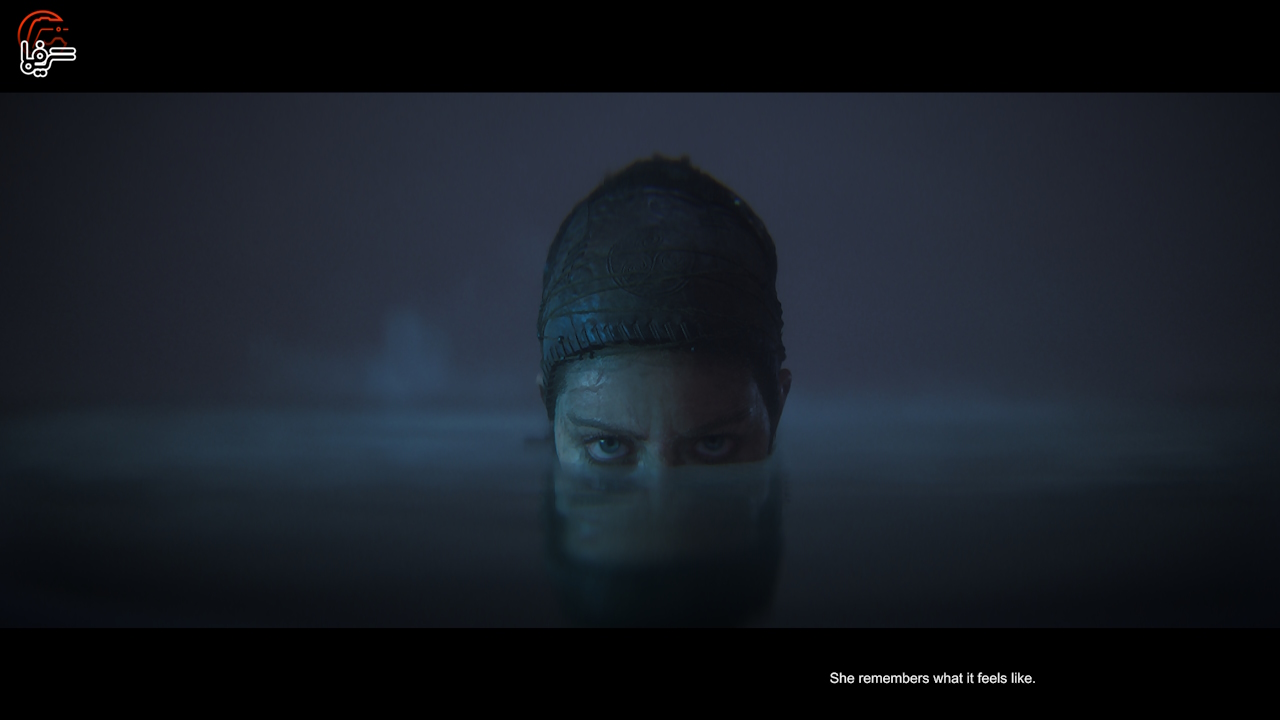
Personally, I could never establish a good connection with Senua in the first game, but in Hellblade 2, we are faced with a more charismatic character who has more self-confidence and has now made peace with the monster within her. In this version, Senua clearly uses her curse as a power and ability to face the challenges of her path, the voices inside her head now more than ever play the role of angels on her shoulders. They encourage her at times and reprimand her at others, with the difference that now Senua has more independence and control.
Alongside the protagonist of the game, we see the introduction of several secondary characters who accompany Senua on her journey, one of which is Thorgester or the so-called Slave Master, who happens to be, in my opinion, the most developed secondary character in the scale of this work. Unfortunately, one of the problems of the narrative section arises in relation to these characters; the addition of these characters to the narrative of this work almost acts like a double-edged sword.
On one hand, Senua’s interaction and reaction with these characters generally adds more dynamism to the storytelling process, but on the other hand, because of how short this game is, some of these characters never have enough time to develop and gain an independent identity, and this issue causes some problems related to these characters, including the conclusion of the game, to slip a bit.

The final part of the game is somewhat hastily traversed compared to other narrative sections, so that the interval between the entry of a new and important character into the game and the end of the story is almost 15 to 20 minutes. This is while up to this point, this game has defined a suitable pattern in its narrative dimension and well develops it! This issue causes the narrative points that rely on this character to not be able to reach an impactful endpoint and give weight to the events around her.
However, the character Senua and the performance of Melina Juergens in her role is exemplary, and you truly feel throughout the game how delicately and precisely the character Senua is portrayed by her actor and appears full of ups and downs.
Overall, the storytelling and general narrative of this work is a strong step forward compared to the first part, which has much more dimensions, layers, and flexibility. The character Senua experiences very good growth throughout this story, and the way the narrative is presented is so delicate and artistic that it can to some extent be considered a new standard in this field for cinematic works. Therefore, apart from some minor problems, it can be said that Hellblade 2 and its story can easily immerse you for several hours.
Bloody dance in the style of Hellblade
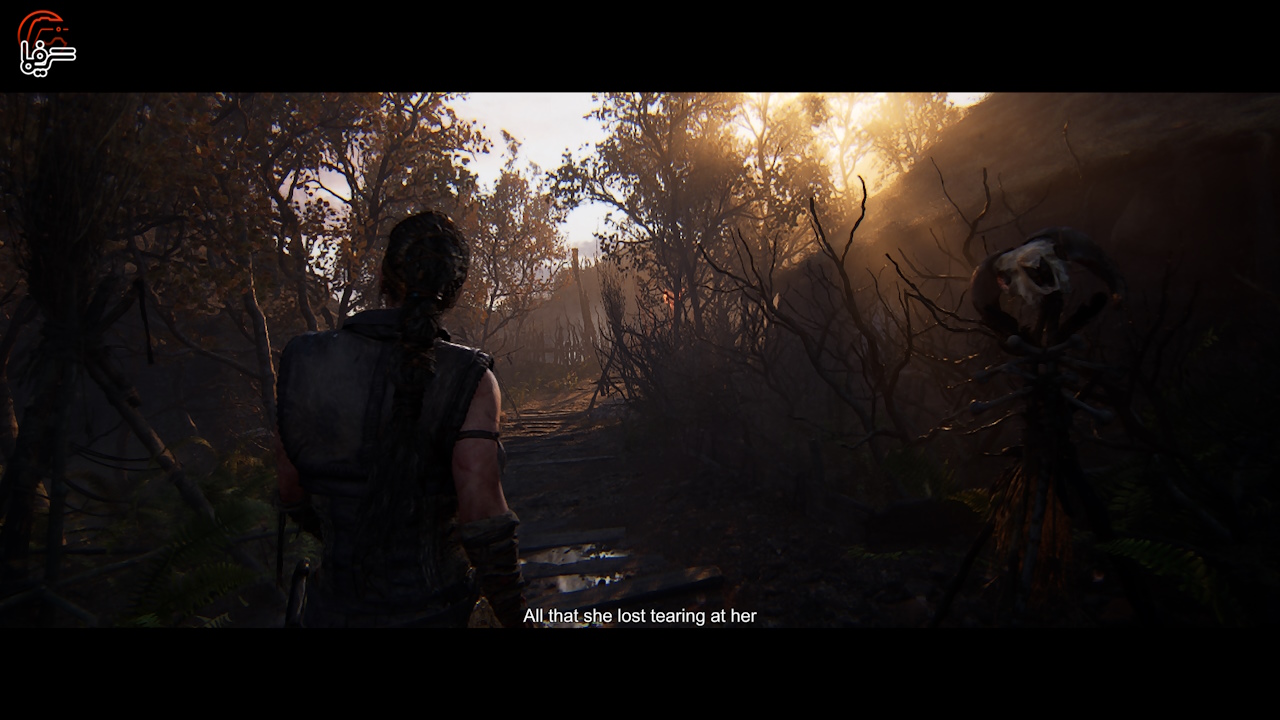
The gameplay structure, or better to say, the “interactive dimensions” of Hellblade 2 relies heavily on the skeleton of the first version. However, in the second part, all interactive dimensions of this work are in service of its cinematic elements. Therefore, it can be said that this title knows well what it wants to be in this regard and what goal it is moving towards. Since this work relies completely transparently on its cinematic elements and the calibration of the audience’s interaction with this game is determined based on the degree of this issue, therefore, it is not supposed to see a very deep mechanism in the gameplay section because the structure of this work does not require such a thing. However, there are positive and negative points in this regard that we will discuss later.
The gameplay in this experience is very superficial, but in my opinion, this superficiality and the lack of different dimensions in this section provide this experience with the capacity to always inject its main dimensions, including narrative and cinematic elements, into this section. This issue ultimately creates a very coherent and integrated mechanism in almost all gameplay processes. The reason for using the word “almost” is that Hellblade 2 sometimes emphasizes a specific process too much in some of its sections, which ultimately causes a drop in narrative tempo and suspension of experience.
There are parts of the game where you spend a lot of time in them, which after a while give you the feeling that no specific progress is happening in the game. However, it should be noted that the number of these sections is limited and the majority of the experience process of this game is balanced in this regard, but there are sections that to some extent act like a brake on the attractive narrative process of the game.
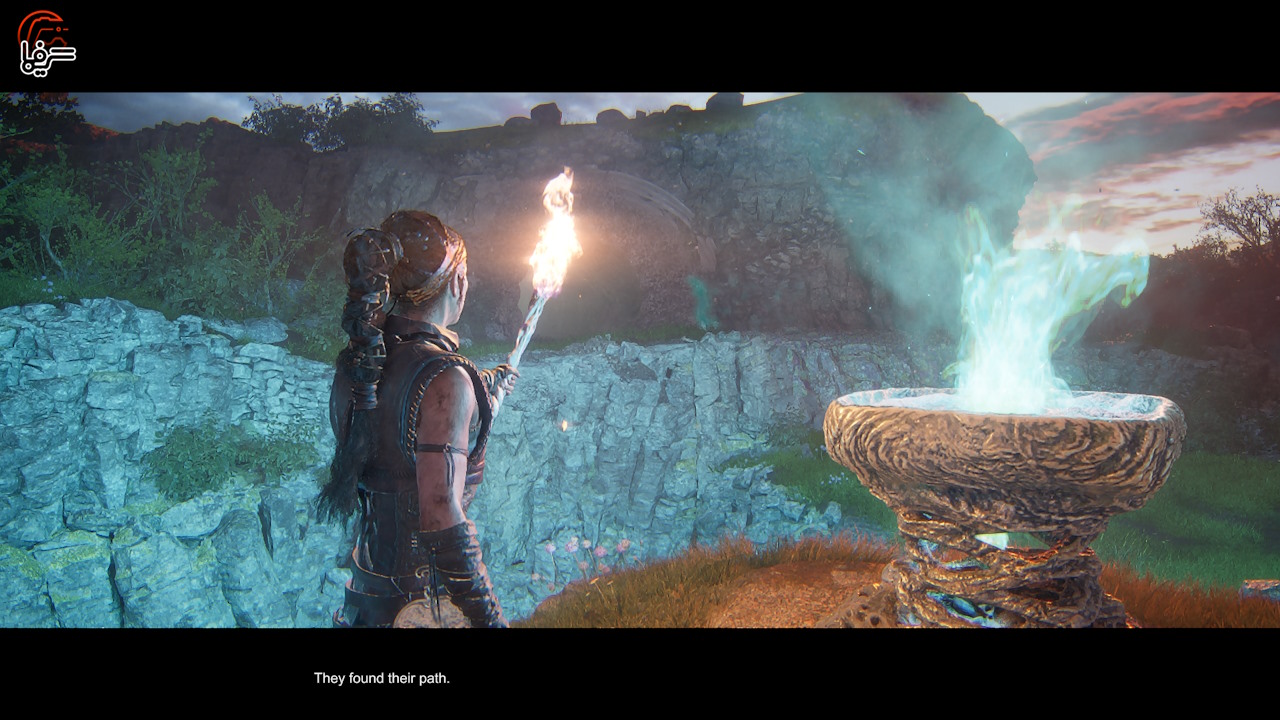
But if we move past this issue, we can say that we are facing an upward trend in interactive dimensions, the more you progress in the game, the more attractive they become. The main reason for this is the intermingling of the cinematic presentation of this experience and its interactive dimensions. We see the return of some puzzle-oriented approaches from the previous section, which are well implemented in their own right, and alongside them, interesting environment-oriented puzzles are introduced to this experience in line with the narrative discussions. While they are very simple, they sometimes appear interesting and engaging in their own right.
However, the reason for this engagement is not necessarily the difficulty or challenge of these puzzles, but how they are made meaningful in the context of storytelling. Because in some of these puzzles, storytelling literally becomes a complement to the process of solving them, which makes them very attractive. Overall, in terms of puzzles, Hellblade 2 performs relatively average, in a way that some better puzzle designs compensate for the weakness of some other puzzles. However, in some parts of the experience, the process of solving some of them can take a long time considering the speed of gameplay, while there is not necessarily enough twist and challenge in this process, which directly leads to a problem that I mentioned a few paragraphs above.
And alongside walking and solving puzzles, the major part of this experience is spent fighting enemies, which leads us to the combat system of this game. The game’s combat system is not particularly deep, in that you only deal with four different buttons during combat. However, improvements have been made to the combat process and its overall mechanism, which has significantly helped the efficiency and performance of it in this experience.
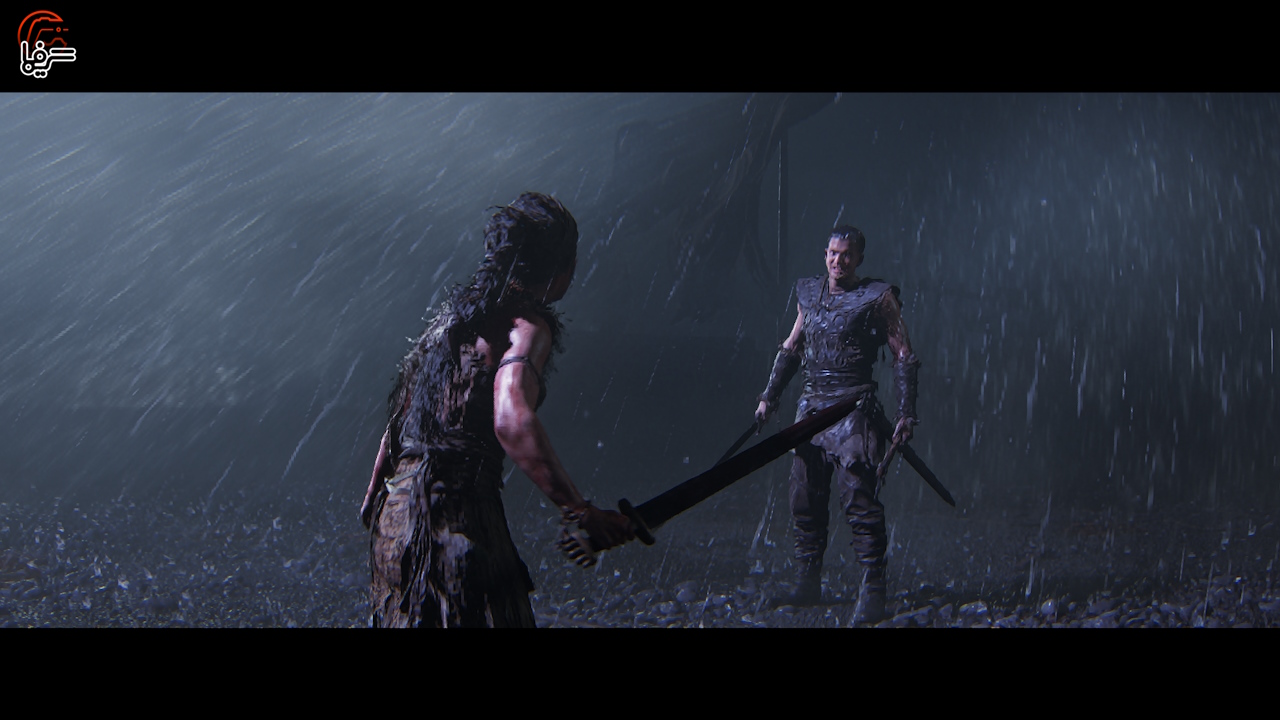
One of my big problems with the first part was in the combat section; in that work, you sometimes faced two or three enemies at the same time, and this was when the game camera and the overall combat system were not able to respond and perform in such scenarios at all. In this version, it is clear that the creators have retreated from that approach and are trying to extend a completely cinematic process to the combat system.
In fact, it can be said that this combat system has been personalized exclusively for this work, and if it was used in any other title, it probably could not show good performance at all.
In this experience and its combat scenarios, in fact, these cinematic elements are replacing multiple mechanisms and become a complement to the overall mechanism of this system, and the subtlety that the creators have spent in this area is exemplary. In this game, you are only dealing with one enemy at the moment, so the camera is fully focused on the events on the screen and does not need to move much.

On the other hand, while the game is not necessarily deep in terms of mechanics, the creators have designed a large number of different animations for combat sequences, making the game’s battles more like a dance that is very dynamic, and the game’s graphics also double the visual appeal of these sequences. For example, every blow you strike on your enemy creates a permanent wound on his body and he is constantly bleeding during the fight, and such details make the overall process of these sequences much more dynamic.
For example, when you defeat your opponent, depending on the direction you have swung your sword, or depending on whether you have benefited from heavy or light blows, a different animation of killing your opponent is played, and that animation seamlessly and integrally transitions you into a fight with the next opponent. In this regard, even weapons and the type of enemies also affect the animation you see when you kill them, because sometimes this action is due to the interaction and reaction with their weapons or even the physical characteristics of these enemies.
Therefore, it can be said that as a cinematic experience, the game’s combat system moves exactly in line with this feature of this experience and is completely sufficient in the context and scale of this work, and thanks to the subtlety of directing and continuity in the presentation and the weight that has been used in depicting these sequences, the superficiality of the combat system does not make it repetitive until the end of the game, because as I mentioned, the choreography of these sequences is extraordinary.
Defining new standards
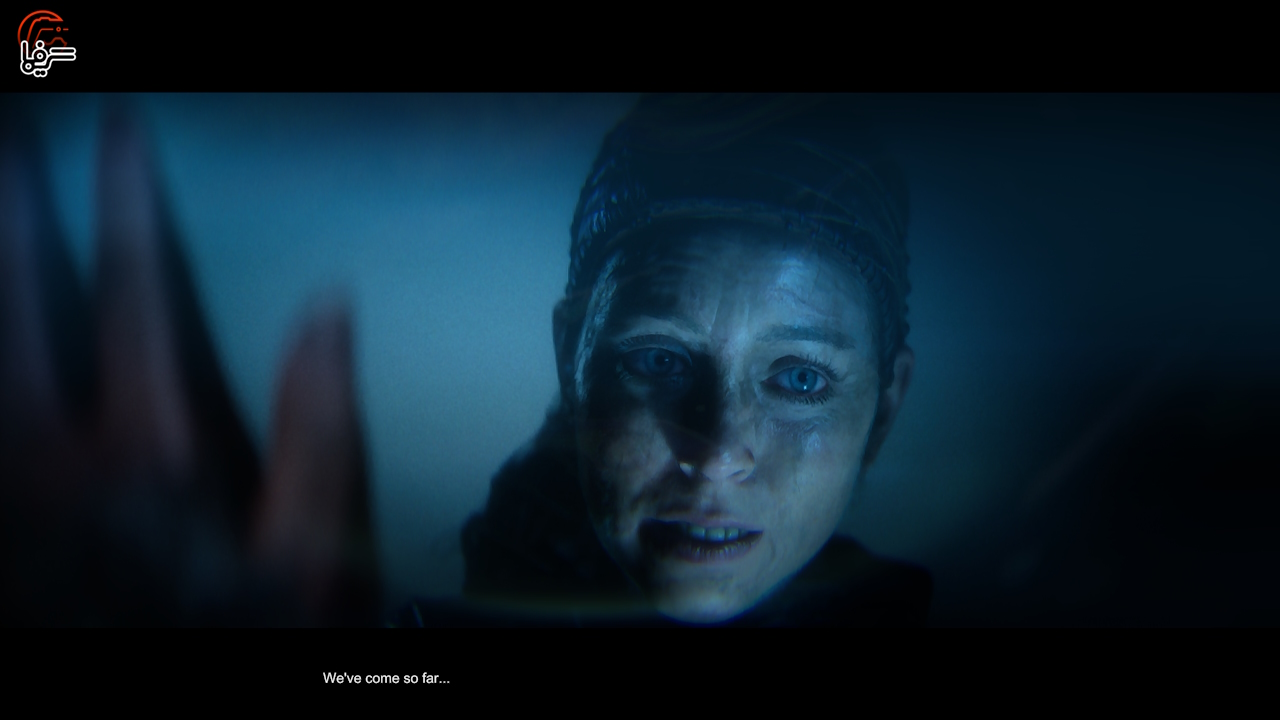
The performance of Hellblade 2 in the graphics and sound design department is, in a word, “extraordinary”! The visual and artistic graphics of this title literally blur the line between reality and a video game so much that personally, during the experience, it was difficult for me to discern whether I was looking at a real human or a photorealistic render of the characters.
Surely, if you have watched any of the displays of this work, you know that this section was one of the main focuses of the development team, which incidentally, their performance in it is extraordinary. The facial details of the characters are extraordinary, and the combination of it with the excellent motion capture of this title makes you never tire of looking at the performance of these characters on the screen.
On the other hand, these characteristics and high details have also found their way into the environment design, and now we are witnessing very dynamic environments with very high details, each of which has its own visual identity, which easily makes Hellblade 2 the most eye-catching and beautiful work of recent years in visual dimensions, setting new standards! We are also witnessing a very good and proportionate environmental diversity with the overall scale of this experience, something that I personally did not expect at all considering the first version. The design of the game environments is very well done, and each one appears distinct from the other and adds a fresh feel to the overall game process.
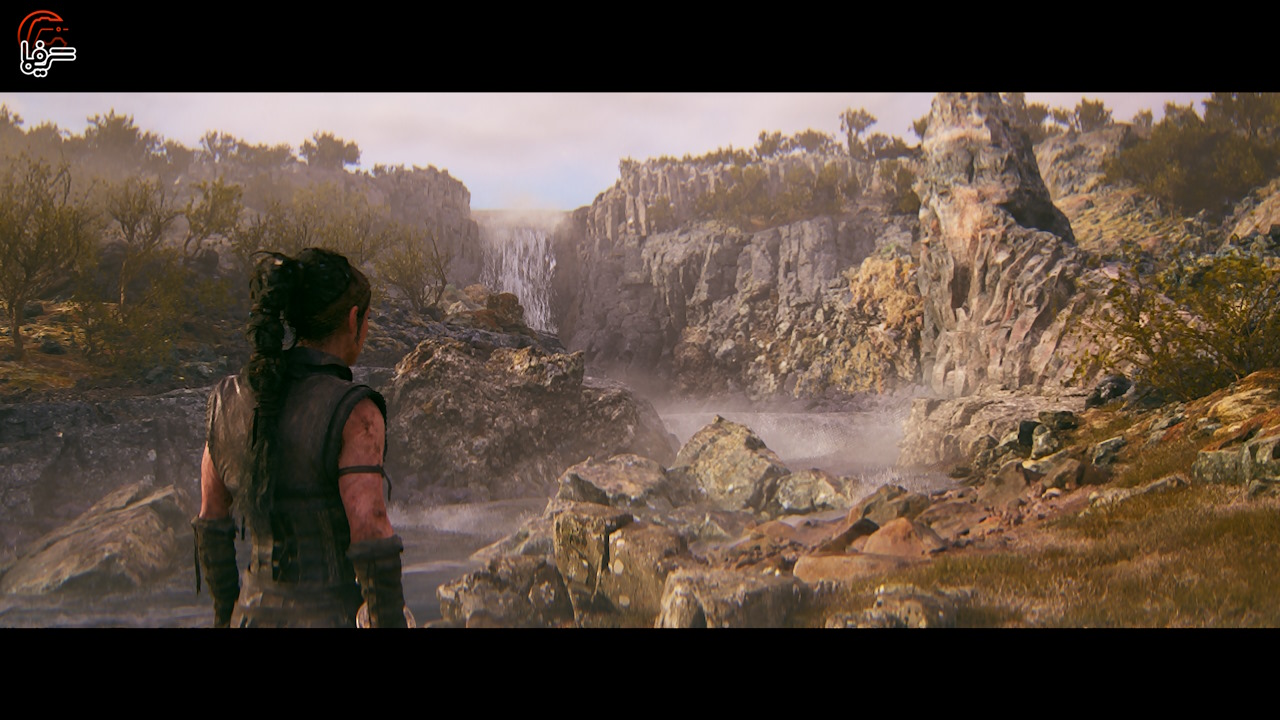
It’s worth mentioning that significant improvements have been made in the design of enemies in the second part of Hellblade; unlike the first version, in this title, we face several different types of enemies both in terms of appearance and functionality. Each of them requires a specific combat strategy from you and also adds a very good variety to the visual aspect of this part of the experience.
The overall sound design of Hellblade 2 is another very prominent aspect of it, which is literally one of the vital dimensions of this work and makes the use of a headset during the Hellblade 2 experience a “must”. The voices that exist in Senua’s head seem to be twisting in your own head in a way that personally, several times due to the conversations of the game and changing their directions, the hairs on the back of my neck stood up as if someone was talking next to my ear! The voice acting in this experience is one of the aspects that heavily engages the player and the creators have artistically managed to implement it.
Finally, let me tell you about the music; the music of Hellblade 2 can be considered the ultimate complement or as they say the Cherry on Top of the direction of this work, which perfectly accompanies the peak moments of the narrative and takes its cinematic impact several degrees higher. The music and soundtrack of the game are truly pleasing to the ear and completely match the conditions, environment, and moment-to-moment events of the overall experience, which ultimately greatly enhances their impact.
The Verdict
Hellblade 2 is an excellent example of illustrating the flexibility and capabilities of the gaming industry and expanding the meaning of an interactive work. This industry allows artists to portray their ambitious interactive ideas with a different caliber and approach, and this is not possible in any other medium except gaming. If we want to judge Hellblade 2 for what it is and intends to be, we are faced with a seamless cinematic interactive experience that, except for a few cases, performs very well in its important sections considering its format and goal. Extraordinary graphics and eye-catching details, excellent sound design, and a multi-layered narrative with an engaging presentation that directly interacts with its interactive dimensions. The gameplay is properly customized to the format of the work and, despite some minor issues, blends well with the cinematic dimensions and enhances the overall process of this experience. So, if you are interested in cinematic narrative-oriented works, Hellblade 2 is a high-quality work that definitely deserves your attention.
Pros:
|
Cons:
|
8.7/10
This game was experienced and reviewed on PC using the key provided by cdkeyshare store.



Comments